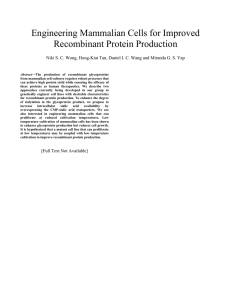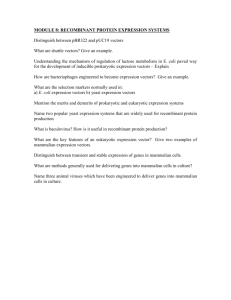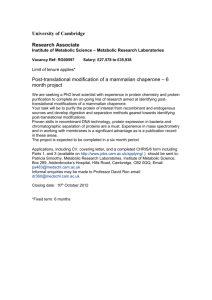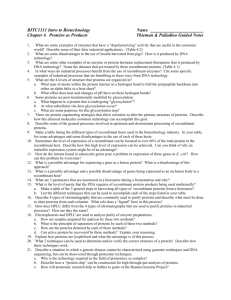Cell-line Engineering of Chinese Hamster Ovary Cells for Low-temperature Culture
advertisement
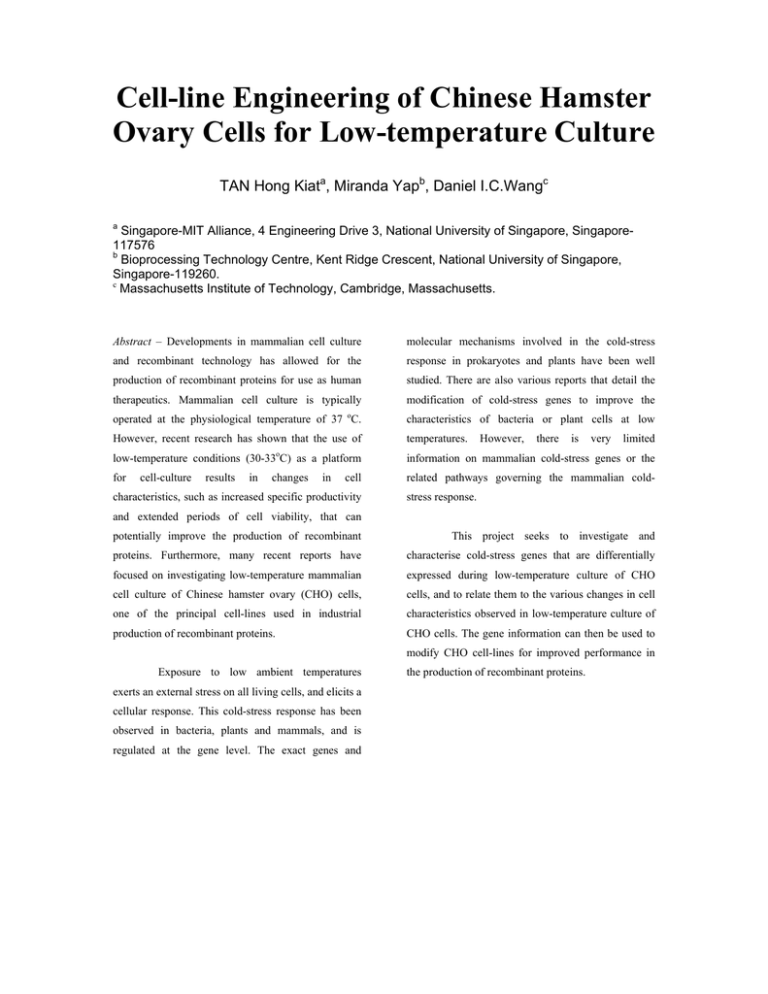
Cell-line Engineering of Chinese Hamster Ovary Cells for Low-temperature Culture TAN Hong Kiata, Miranda Yapb, Daniel I.C.Wangc a Singapore-MIT Alliance, 4 Engineering Drive 3, National University of Singapore, Singapore117576 b Bioprocessing Technology Centre, Kent Ridge Crescent, National University of Singapore, Singapore-119260. c Massachusetts Institute of Technology, Cambridge, Massachusetts. Abstract – Developments in mammalian cell culture molecular mechanisms involved in the cold-stress and recombinant technology has allowed for the response in prokaryotes and plants have been well production of recombinant proteins for use as human studied. There are also various reports that detail the therapeutics. Mammalian cell culture is typically modification of cold-stress genes to improve the o operated at the physiological temperature of 37 C. characteristics of bacteria or plant cells at low However, recent research has shown that the use of temperatures. o However, there is very limited low-temperature conditions (30-33 C) as a platform information on mammalian cold-stress genes or the for related pathways governing the mammalian cold- cell-culture results in changes in cell characteristics, such as increased specific productivity stress response. and extended periods of cell viability, that can potentially improve the production of recombinant This project seeks to investigate and proteins. Furthermore, many recent reports have characterise cold-stress genes that are differentially focused on investigating low-temperature mammalian expressed during low-temperature culture of CHO cell culture of Chinese hamster ovary (CHO) cells, cells, and to relate them to the various changes in cell one of the principal cell-lines used in industrial characteristics observed in low-temperature culture of production of recombinant proteins. CHO cells. The gene information can then be used to modify CHO cell-lines for improved performance in Exposure to low ambient temperatures exerts an external stress on all living cells, and elicits a cellular response. This cold-stress response has been observed in bacteria, plants and mammals, and is regulated at the gene level. The exact genes and the production of recombinant proteins.
